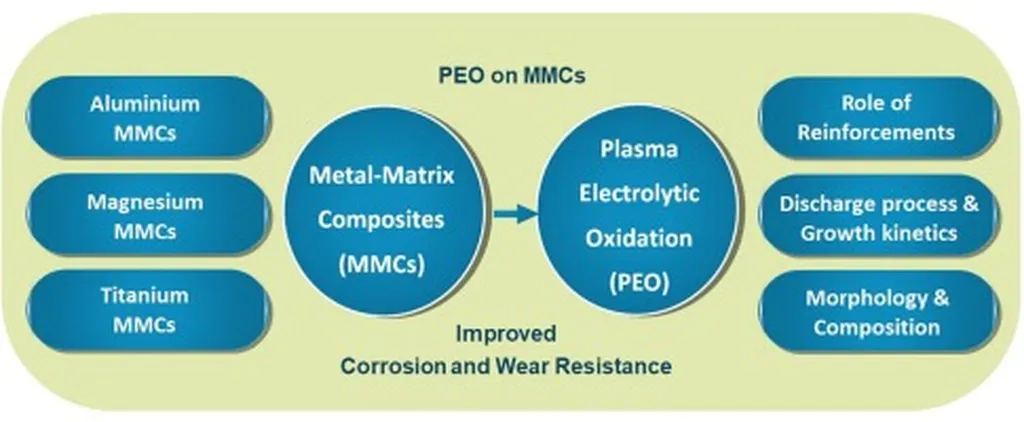In the quest to enhance the durability and efficiency of materials used in harsh environments, a team of researchers led by Kristina Mojsilović from the Institute of Surface Science at Helmholtz-Zentrum Hereon and the University of Belgrade has made significant strides. Their work, published in the journal ‘Applied Surface Science Advances’ (translated as ‘Advances in Applied Surface Science’), focuses on plasma electrolytic oxidation (PEO) and its potential to revolutionize the energy sector.
The study delves into the formation of oxide layers on AA2024 alloy, a material widely used in various industrial applications due to its excellent strength-to-weight ratio. By modifying the electrolyte with different metallic cations—zinc, cerium, nickel, cobalt, and calcium—the researchers aimed to improve the coating properties of the alloy.
Mojsilović and her team discovered that the addition of these cations significantly influences the plasma discharge behavior, oxide layer composition, surface morphology, and phase distribution. “The key finding here is that the type of cation added to the electrolyte plays a crucial role in determining the final properties of the oxide layer,” Mojsilović explained.
One of the most notable aspects of their research is the comparative analysis between unipolar and bipolar electrical regimes. The study found that bipolar mode offers distinct advantages, particularly in achieving a “soft sparking” condition. This condition, which occurs after approximately four minutes of treatment, results in thicker, less porous coatings with superior structural integrity.
“The bipolar regime allows for both outward and inward oxide formation, which enhances the incorporation of cations into the coating,” Mojsilović noted. This dual growth mechanism is a significant departure from the primarily outward oxide growth observed in unipolar PEO.
The research also highlights the unique behavior of nickel nitrate and zinc acetate under bipolar conditions. These additives initiate distinct oxide growth mechanisms compared to other cationic additives, underscoring the importance of specific metallic cations and their characteristics.
The implications of this research for the energy sector are substantial. Improved oxide coatings can enhance the durability and efficiency of materials used in power generation, transmission, and storage. This, in turn, can lead to more reliable and cost-effective energy solutions.
As the world continues to seek sustainable and efficient energy solutions, the work of Mojsilović and her team offers a promising avenue for advancing material science. Their findings not only contribute to the fundamental understanding of PEO processes but also pave the way for practical applications that can benefit various industries, particularly the energy sector.
In the words of Mojsilović, “This research opens up new possibilities for tailoring oxide coatings to meet specific industrial needs, ultimately contributing to more robust and efficient energy systems.” The study, published in ‘Applied Surface Science Advances’, serves as a testament to the ongoing innovations in material science and their potential to shape the future of energy technology.

